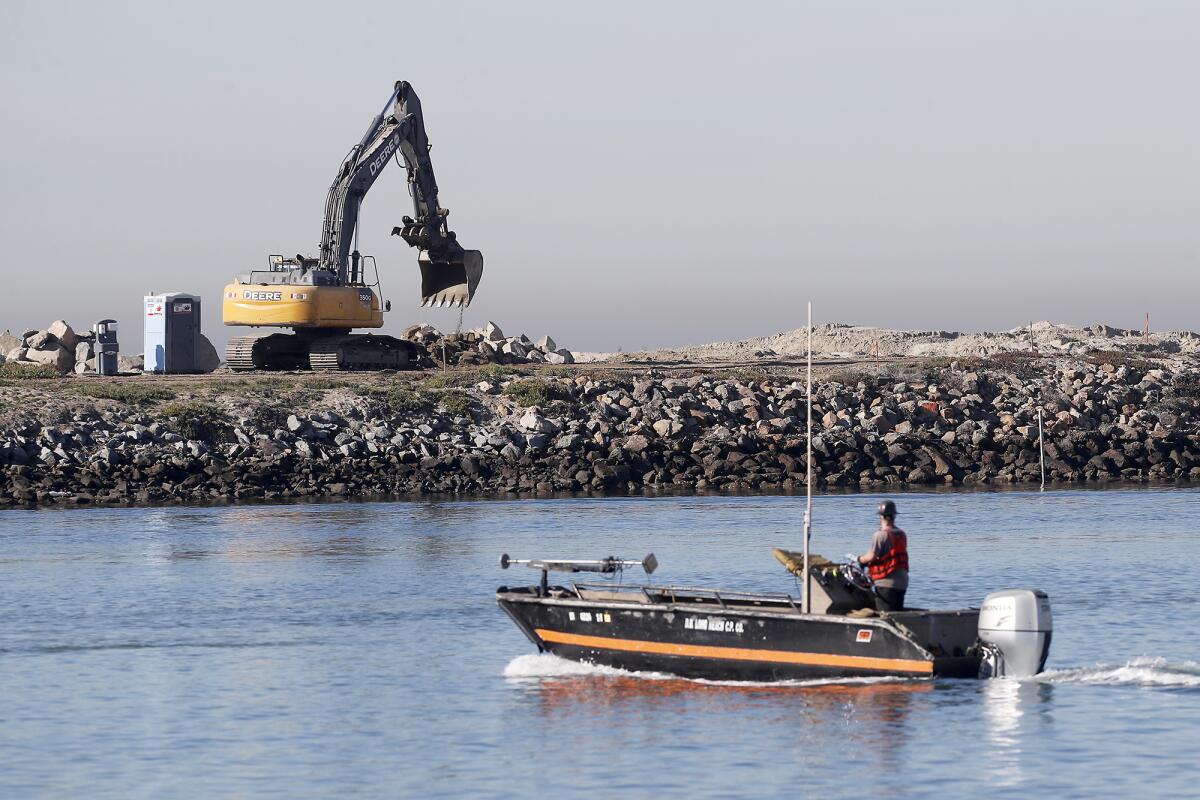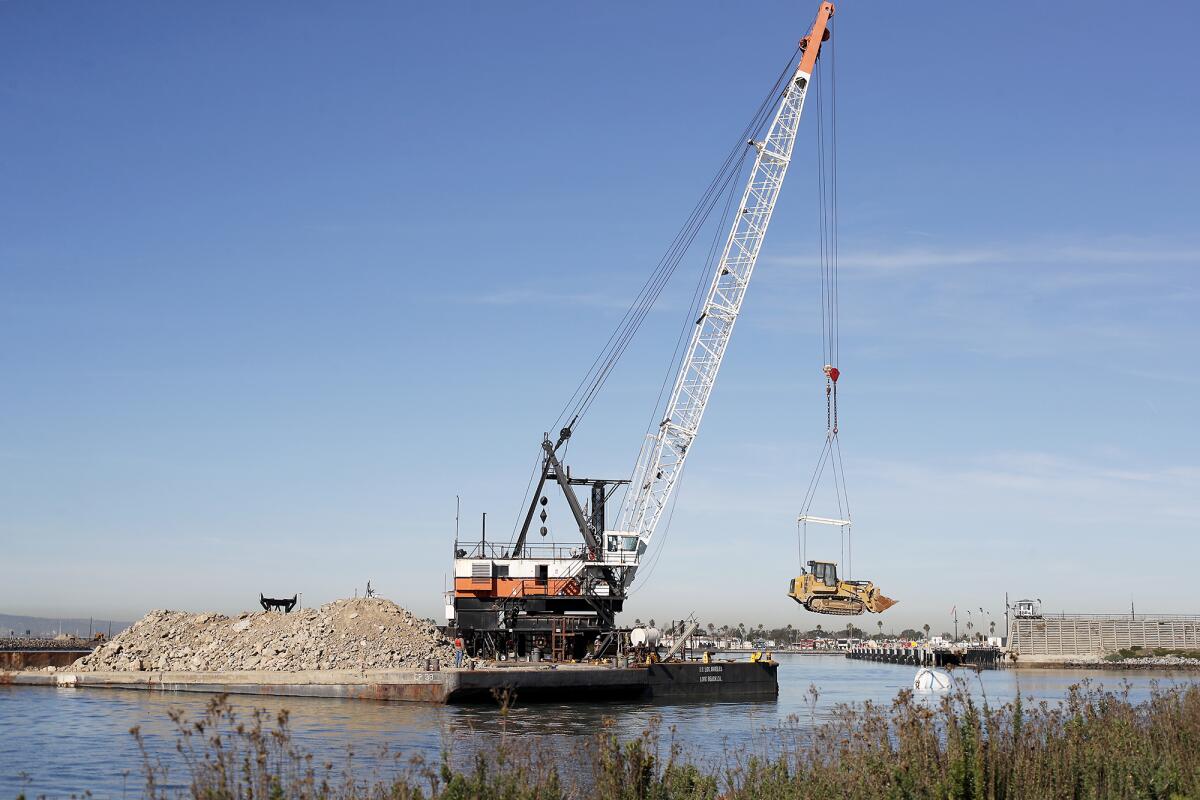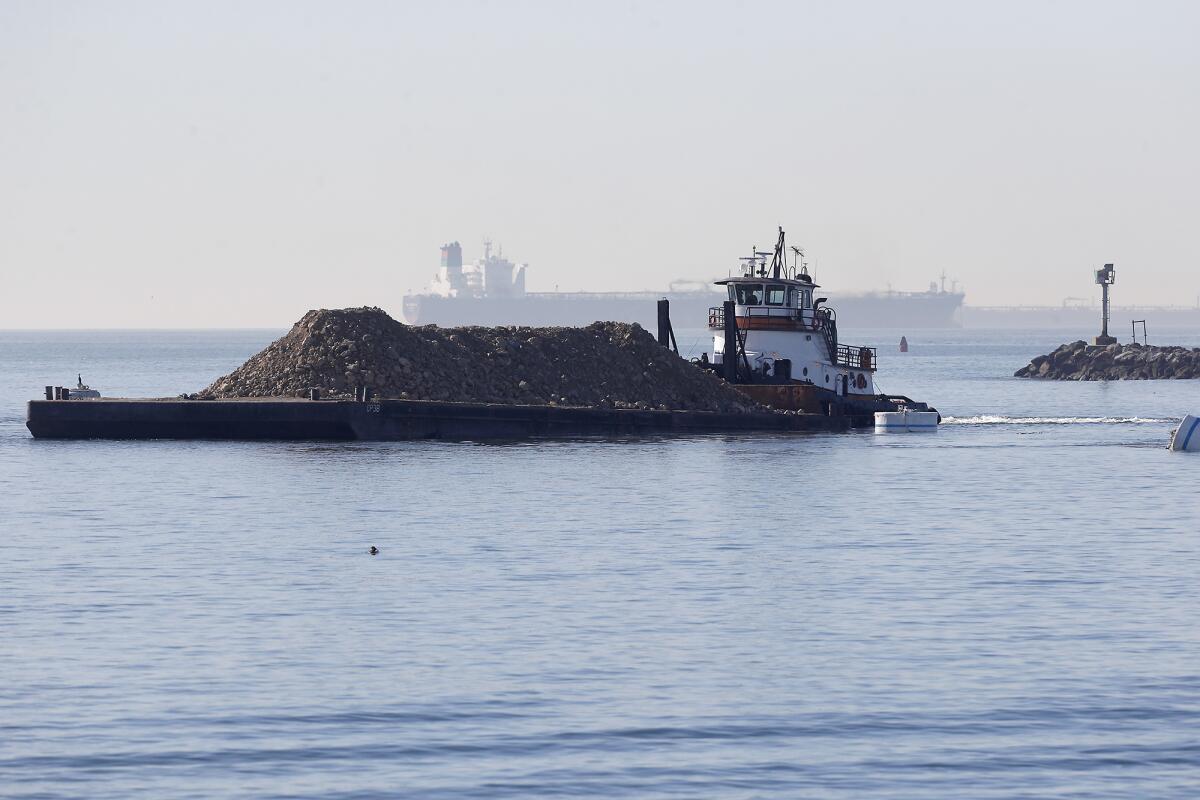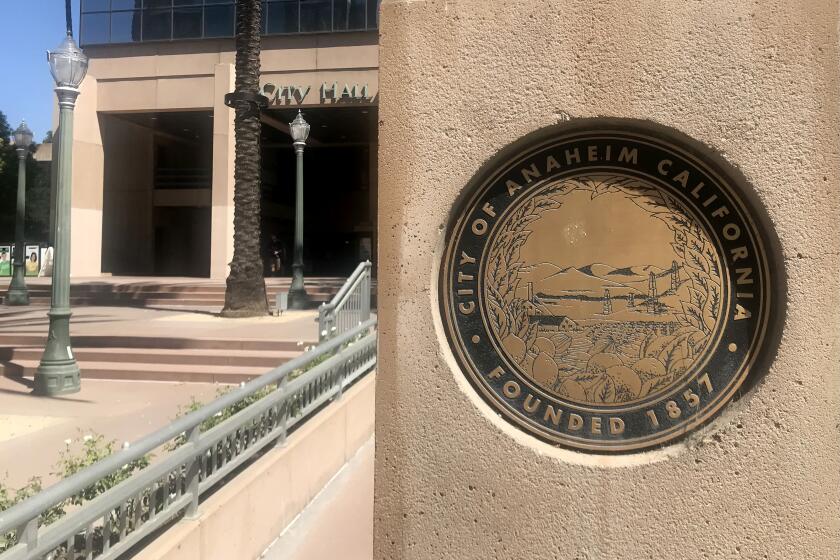Navy breaks ground on $154-million project at Seal Beach to reconfigure Anaheim Bay, replace ammunition pier

The U.S. Navy recently broke ground on the first phase of a $154 million construction project to reconfigure Anaheim Bay and replace a World War II-era ammunition pier at Naval Weapons Station Seal Beach.
For the first time, the planned pier and causeway will be able to accommodate 844-foot-long amphibious assault ships or simultaneously service two guided-missile destroyers.
“That’s very important if you need to move a lot of ships overseas,” Navy spokesperson Gregg Smith said.
Considering the next closest Naval Weapons Station is in Washington, over 1,000 miles from the U.S. Pacific Fleet’s hub in San Diego, the new ammunition pier will raise Seal Beach’s strategic importance for the Navy.

“The building of a new ammunition pier is very rare so I feel very fortunate to be involved,” said Lt. Cmdr. Nigel Morrissey, public works officer at Naval Weapons Station Seal Beach.
A former nuclear submarine mechanic, Morrissey has first-hand experience understanding why it’s important for sailors to have the resources they need as quickly as possible. He’s proud to play a role in providing sailors with easier access to vital ordinance at Seal Beach.
Capt. Jason Sherman, commanding officer of the Seal Beach base, hosted a groundbreaking ceremony for the ammunition pier replacement project on Dec. 13.
The reconfiguring of Anaheim Bay is a gargantuan endeavor. Navy officials expect contractor Manson/Connolly Seal Beach JV to move or dredge 870,000 tons of rock and 1.15 million cubic yards of sand before phase two is completed in 2024. About 370 contract workers will be employed between both phases of the project, Smith said.
On Friday, a Navy-contracted barge loaded with 1,900 tons of rocks and dirt from a quarry at Catalina Island was pushed to the east side of the existing pier. A 100-foot tall crane mounted on a second barge lifted a bulldozer about 20 feet into the air and then onto the rock-laden barge. The bulldozer then pushed the earthen material into the water to create the foundation of an 800-foot long causeway that will provide access to the new pier.

Since Huntington Harbour was developed in the 1960s, civilian boats have passed through the Navy’s jurisdiction while entering and exiting the harbor. Navy security forces currently close the harbor while warships are arriving or departing the ammunition pier.
A new public navigation channel out to the Pacific Ocean will separate civilian boat traffic from naval operations with a barrier of rock and sand. To accomplish this, excavators are removing rocks and sand from a section of the beach northwest of Surfside. The Navy plans to recycle material cut from the beach to build the planned causeway, eliminating the need for it to be trucked away.
This navigation channel will also be used by marine wildlife, including green sea turtles and dolphins, to enter the waters of Seal Beach National Wildlife Refuge. The Navy contracted biologists to spot animals swimming through the construction site, which would force construction crews to stop working.
“We’ve haven’t had a stop yet but if they were to linger around it could be quite a long time,” Morrissey said.
South Coast Air Quality Management District has conducted a surprise inspection of the construction site to spot environmental impacts. The check turned up clean, Smith said. US Fish & Wildlife Service also has a full-time refuge manager on base.
All the latest on Orange County from Orange County.
Get our free TimesOC newsletter.
You may occasionally receive promotional content from the Daily Pilot.




